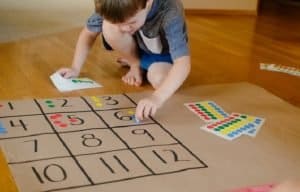There has been a constant debate over the years over the methods used for teaching children how to read. The two methods are phonics and whole language. Phonics is a method by which children are taught the sound of individual alphabets and how they can combine different sounds in order to form words. On the other hand, the whole language method is one whereby children are taught words as whole units. Are you aware of how your child is learning how to read? Let us talk about these two methods in more detail.
Phonics Method:
Children are first taught the sounds of alphabets. For example “B” sounds like “bi” or “C” sounds like “k”. They are then taught how the combination of these sounds form words for example the combination of sounds of the alphabets “k”, “a” and “t” will form the word “cat”. They then learn how the combination of two alphabets make the same sound e.g. “str” or sh” that can form words like straw, strong, stray or ship, show, shot. This method has a series of such rules that children have to learn and adapt while reading. The issue arises if children are unable to apply these rules to print. Hence, it is necessary that once they learn a particular rule they should be taught how to apply in to printed material.
Phonics is a structured step by step way of learning how to read. It may take time for kids to adopt this method but once they do reading becomes so much easier. They recognize groups of letters and their sounds and then are able to read bigger words by splitting the word into parts, thus improving on their pronunciation and word recognition. Another advantage to this method is that children learn how to write and spell words at the same time. The disadvantage to this method is that children may not fully understand the meaning of words and text and end up finding reading to be boring.
Whole Language Method:
Children are taught through printed material and pictures. They then memorize words and practice writing these words while simultaneously using pictures to learn what these words mean. For example a teacher will read a short story and pick out keys words in that story. Those words are then taught to them through pictures. They learn how to spell, read and write these words as a whole. The advantage of this is that children learn how to write at an early age. The disadvantage of this method is that children are not able to decode words that are not familiar to them and end up playing the guessing game. This leads to inaccurate reading and they are then unable to understand what they read.
Which of the two?
The best way of gaining the advantages of both methods is by using phonics as the basis and then building on it with visual activities. Through the phonics method children should be taught the sounds of alphabets and their combinations and then the immediate use of these sounds and words into connected words, pictures and stories. It is important that the phonics method is also supported with stories and pictures so that children also associate meanings with the words they read. It is also important that the teacher makes its easy, meaningful and interesting for students.
RARE Learning Pre-K programs have experienced teachers in Frisco, Plano, Las Colinas, Grapevine, and Valley Ranch in Texas who are able to effectively apply reading methodologies into their teaching styles thus making it interesting and productive for Pre-K students. Children are able to develop a strong foundation and grow up with better communication skills and become avid readers. As a mom of a RARE Learning student said “I used to read to my 4 year old, now – three months after joining RARE – he reads to me.”






